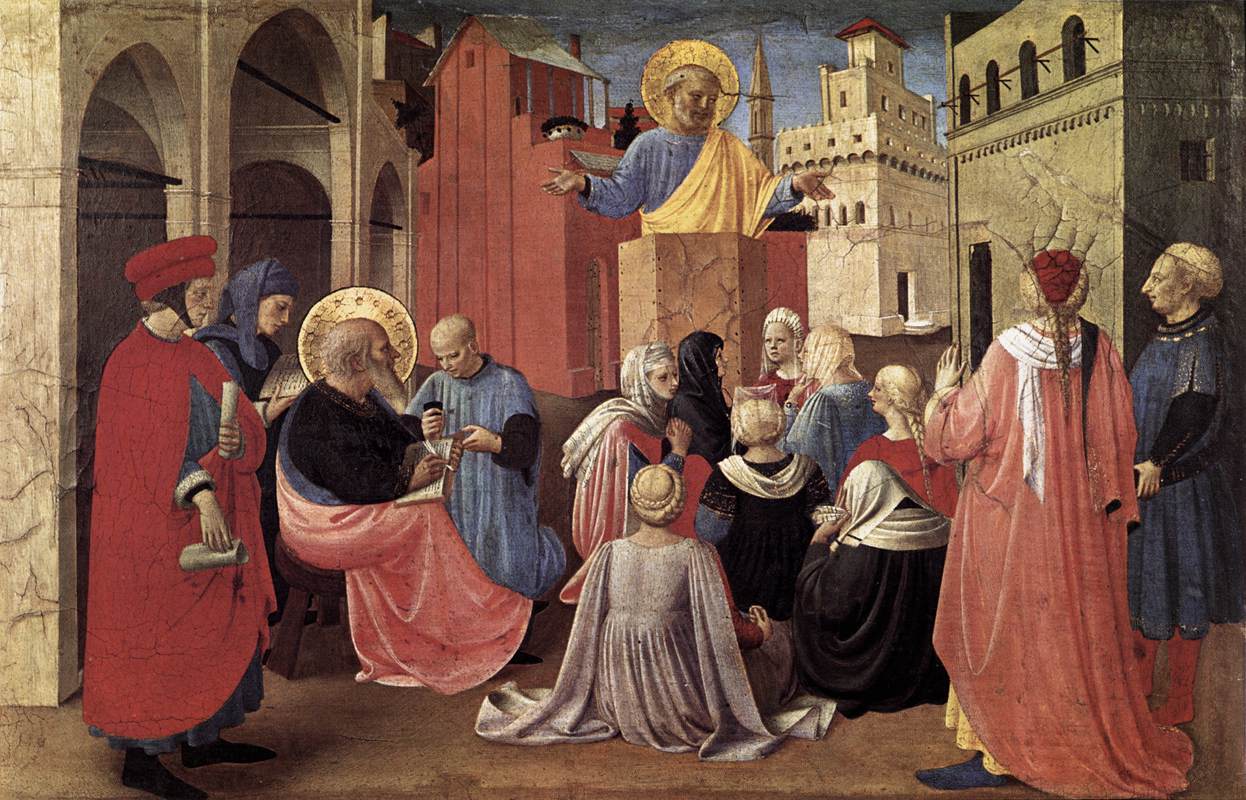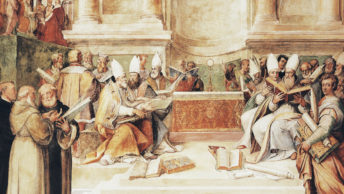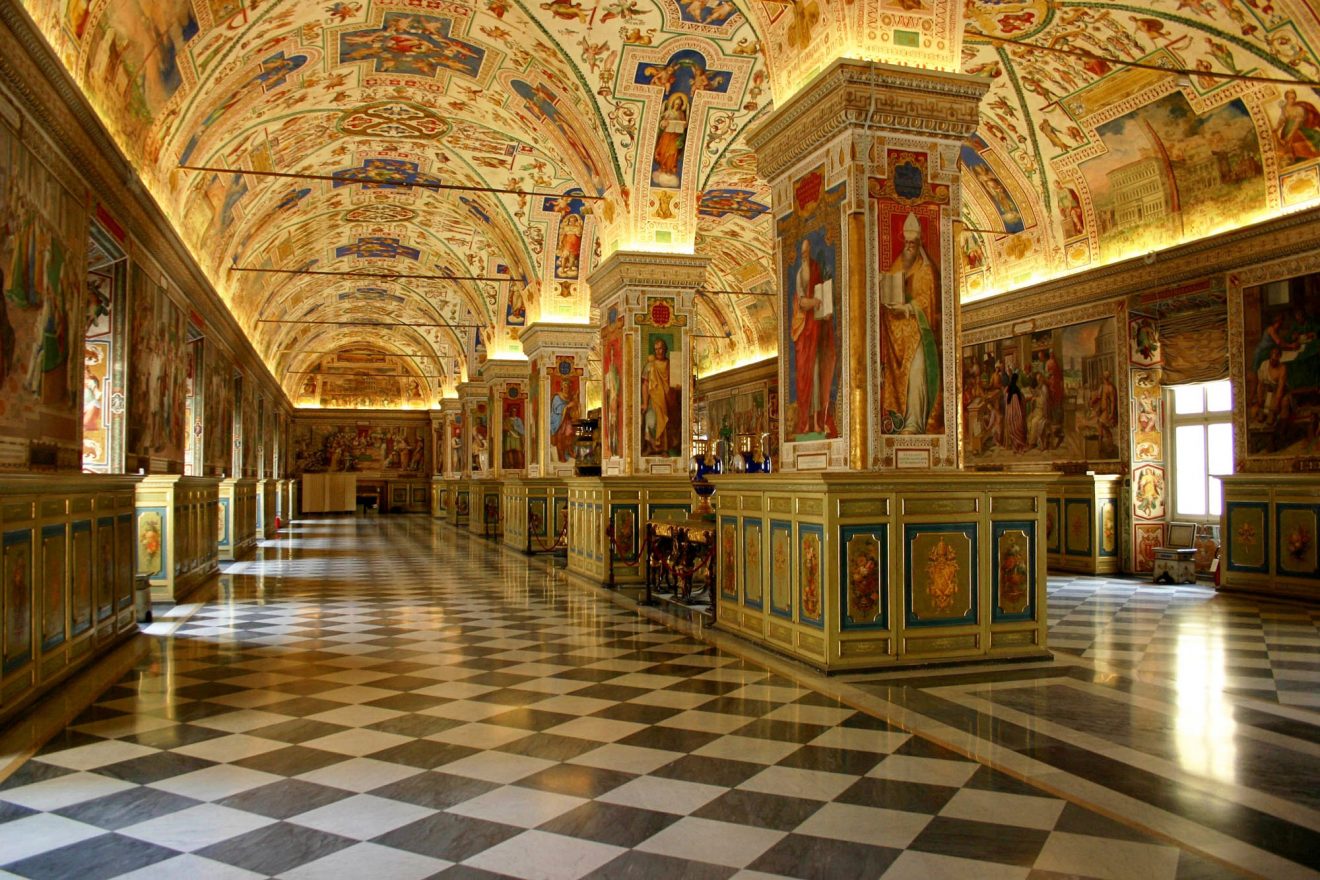In the first chapter of Lumen Gentium, the fathers of the Second Vatican Council noted that “To carry out the will of the Father, Christ inaugurated the Kingdom of heaven on earth and revealed to us the mystery of that kingdom. The Church, or, in other words, the kingdom of Christ now present in mystery, grows visibly through the power of God in the world. This inauguration and this growth are both symbolized by the blood and water which flowed from the open side of a crucified Jesus.” (par. 3) In addition to these descriptors, others are also given: sheepfold; field; building; body; and one, holy, catholic, and apostolic.
As a sheepfold, “the Church is the sole and necessary entrance to which is Christ.” (Jn 10:1-10) Indeed, “all sheep are brought to pasture by Christ himself,” who is the Good Shepherd. (Jn 10:11; 1 Pet 5:4) Therefore, given that we (the flock) exist within her sheepfold, the Church serves not only as an instrument to glorify God, but also as an instrument for our redemption. Through her, we become incorporated into the very life of God. Further, through the sacrament of Baptism, we come to know the water which purifies and frees us from the power of darkness and inserts us into the very life of God. During one World Youth Day, St. John Paul II reminded those present that “by your baptismal anointing, you have become members of the holy people. Through the sacrament of Confirmation, you share fully in the Church’s mission.” (Do you know what Baptism does to you?, Origins, September 4, 1997, Vol 27: #12)
The Church is also a field (1 Cor 3:9) in that she “…has been planted by the heavenly farmer as a choice vineyard. ” (Mt 21:33-43) In the Gospel of John (15:1), Jesus says “I am the true vine, and my Father is the vinedresser.” As members of the Church and the true vine, we are called to testify and witness to the Truth which flowed from Christ at Calvary, and continues to flow, guided by the Holy Spirit, through the teaching of the magisterium of the Church. But given that the Church remains a “stranger in a foreign land,” her members need to be prepared for rejection, ridicule, and persecution. And so, in our encounters with the “culture of death,” we should remember that: “Blessed are you when people hate you, and when they exclude and insult you, and denounce your name as evil on account of the Son of Man.” (Lk 6:22)
As a building, the Church, of which Christ himself is united, becomes a living stone that “we here on earth are built into it.” (1 Pet 2:5) Indeed, the “stone which the builders rejected” (Mt 21:42, Acts 4:11, 1 Pet 2:7, Ps 117:22) has been built upon the apostles. In the General Introduction to Christian Initiation (The Rites, The Liturgical Press, 1990), our incorporation into this building is eloquently described:
“Through baptism, we are: incorporated into the Body of Christ, incorporated into the Church, built up together in the Spirit, built up into a house where God lives, built up into a holy nation, built up into a royal priesthood, and into a sacramental bond of unity linking all who have been signed by it.”
As a body, the Church is a diverse unity. In his Letter to the Corinthians (1 Cor 10), St. Paul declared: “That all of you agree in what you say, and that there be no divisions among you, but that you be united in the same mind and in the same purpose.” With the Holy Spirit guiding the Church and giving life to it, the entire body is moved forward—in unity. As Lumen Gentium (1) teaches, “All men are called to this union with Christ, who is the light of the world, from whom we go forth, through whom we live, and toward whom our whole life strains.” (par. 3) As members of this one body, we must remain obedient to the Church and its teaching authority. By doing so, we are faithful to the words of Christ (Jn 17:18-22):
“As you sent me into the world, so I sent them into the world. And I consecrate myself for them, so that they also may be consecrated into the truth. I pray not only for them, but also for those who will believe in me through their word, so that they may all be one, as you, Father, are in me and I in you, that they also may be in us, that the world may believe that you sent me.”
Finally, the Church is one, holy, catholic, and apostolic. She subsists as a visible structure in the Catholic Church, although elements of sanctification and truth may be found outside of her visible confines. These elements “impel us toward catholic unity.” As members of the Church, we believe that the Holy Spirit sanctifies it, rejuvenates its members, and leads us to Christ. Through apostolic succession, the deposit of faith is protected and handed on through the Sacrament of Holy Orders. As the Church traverses history, she is guided on earth by the successor of Peter, the vicar of Christ, and renewed by the Holy Spirit, and is called to continually empty herself (Phil 2:7), as Christ himself did. By doing so, the Catholic Church will continue to guide and inspire us to life in Christ.







